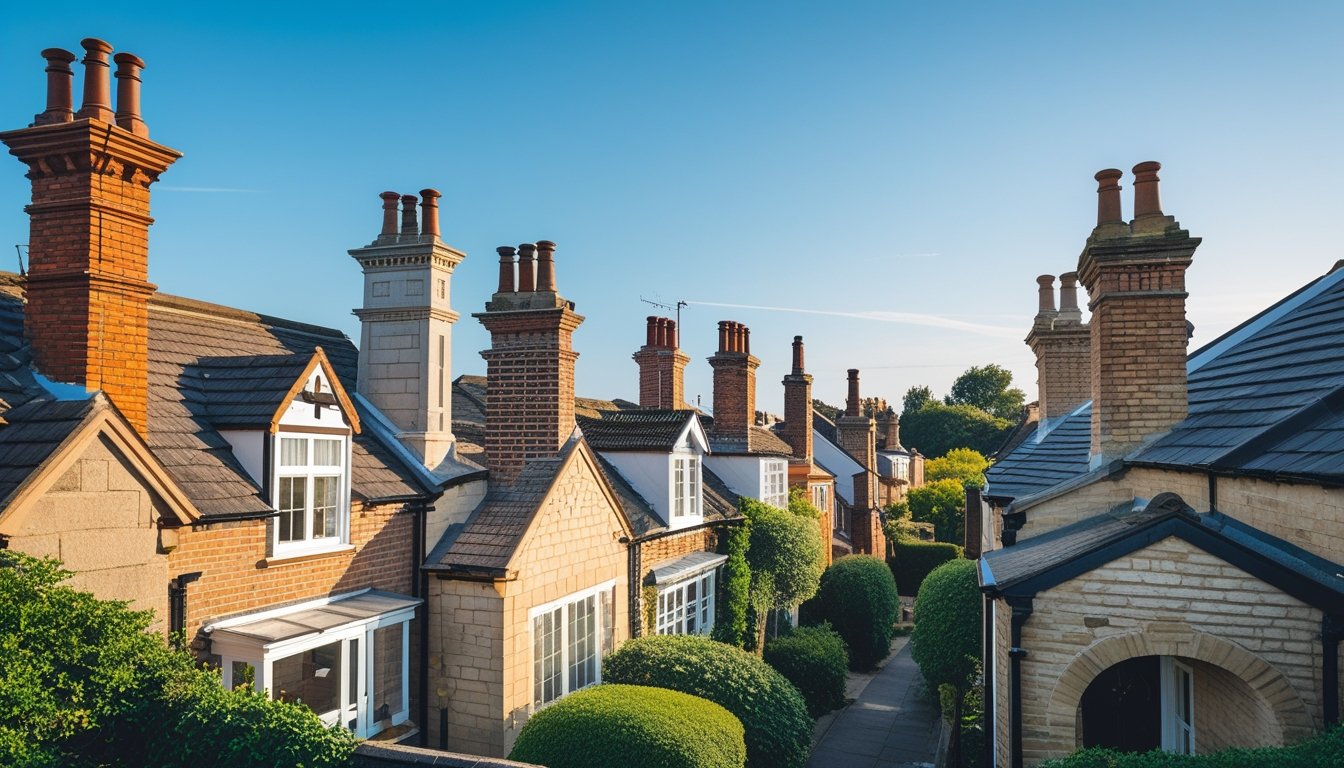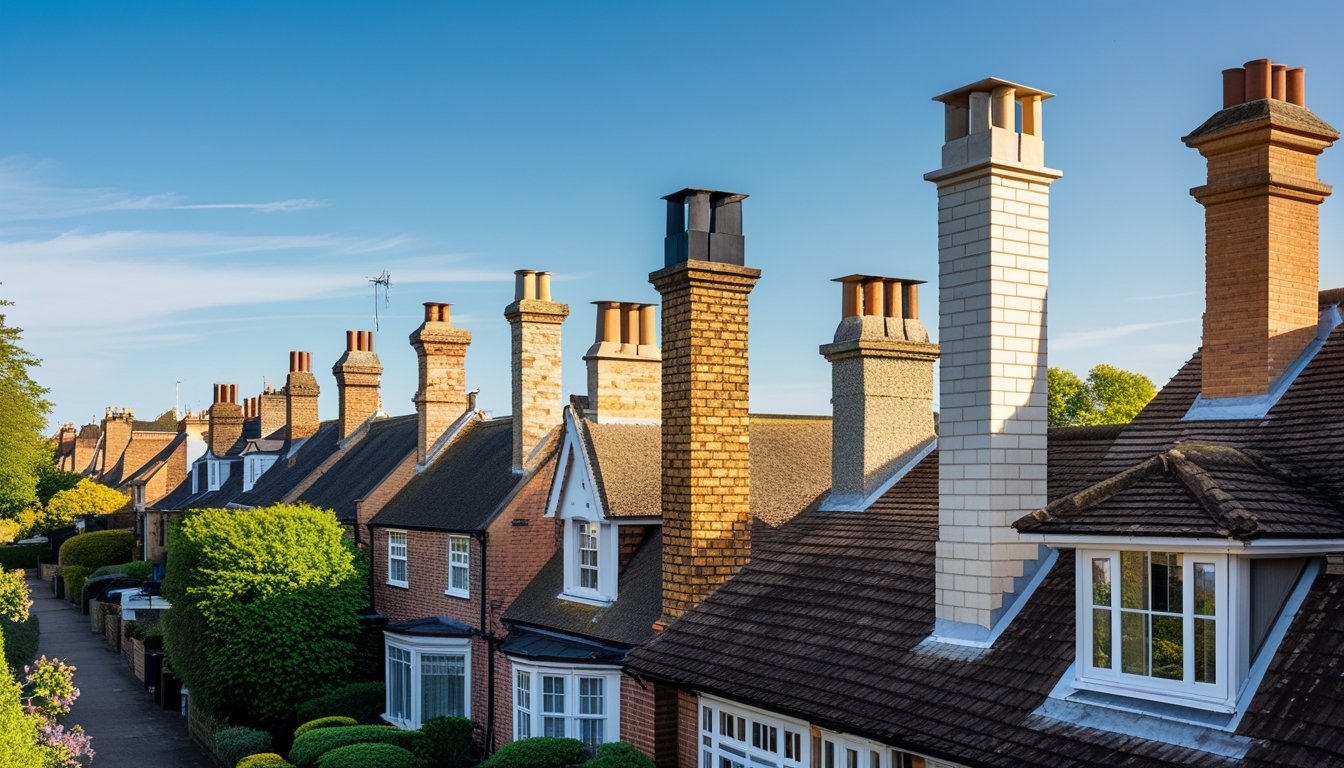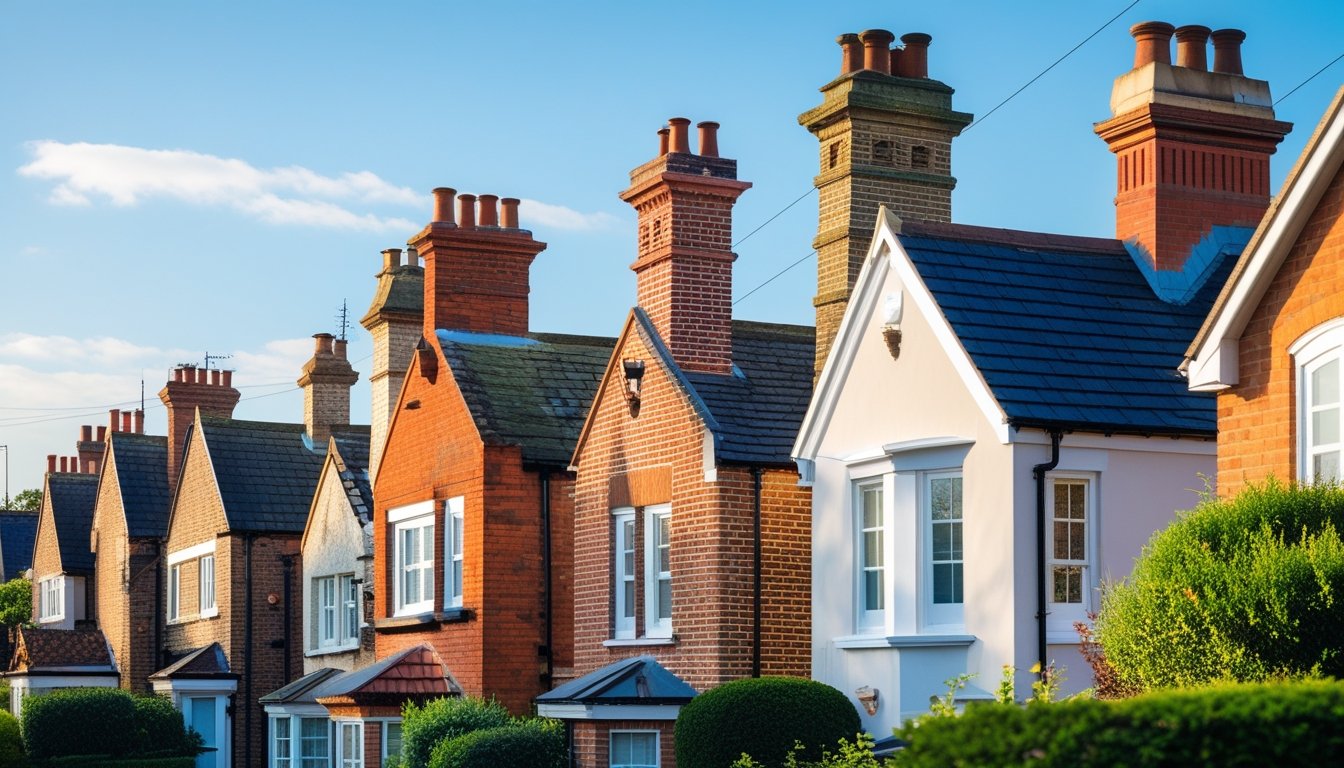Late updated: 12 Oct 2025 09:10
Written by: Oliver Bennett
Unique Chimney Styles For UK Homes: A Comprehensive Guide
Exploring the enchanting world of chimney styles opens up a fascinating aspect of UK architecture. From the charming rusticity of traditional brick chimneys to innovative modern designs, we find ourselves captivated by these essential features of our homes. Chimney styles not only complement a home's aesthetic but also enhance its functionality, providing both warmth and character.

In the UK, the architectural landscape is dotted with diverse chimney designs, each telling its own unique story. These structures range from the classic elegance of terracotta pots to sleek contemporary finishes that add a touch of sophistication to modern homes. As we delve into the intricate details and variations, it's clear how integral chimneys are to the identity of British homes.
Our exploration will cover distinctive elements that make certain chimney styles stand out, providing inspiration for anyone looking to elevate their home's charm. Just as every home is unique, so too are the options available for the chimneys that crown them, promising a blend of tradition and innovation.
Key Takeaways
- Variety of chimney styles enhances both aesthetics and functionality.
- Chimney designs are an integral part of UK home architecture.
- Unique elements make certain chimney styles distinctive.
Key Chimney Styles For UK Homes

In the UK, chimney styles play a crucial role in both functionality and aesthetics. Each type has distinct characteristics shaping the architectural landscape.
Masonry Chimneys
Masonry chimneys remain a classic choice for UK homes, known for their durability and timeless appeal. Constructed from brick or stone, they provide unmatched stability. Over time, they’ve evolved from simple structures to elaborate designs, often seen in older homes and listed buildings.
A key benefit is their ability to withstand high heating temperatures, making them ideal for open fires and wood stoves. Maintenance is essential, requiring regular inspection to prevent issues like crumbling mortar or blockages. Despite requiring a solid foundation, these chimneys offer a traditional look that complements various architectural styles.
Metal Chimneys
Metal chimneys offer a modern twist with their sleek, streamlined design. Typically made from stainless steel or other metals, they’re lightweight and easier to install compared to masonry chimneys. This makes them a popular choice for contemporary homes and retrofits.
They excel in efficiency and require less maintenance, resisting rust and corrosion effectively. Metal chimneys are often double-walled, providing additional insulation and safety. However, they may lack the historic charm of other types. We find these chimneys are perfect for those seeking a low-maintenance option without sacrificing performance.
Prefabricated Chimneys
Prefabricated chimneys provide homeowners with flexibility and convenience. Designed to fit a variety of heating appliances, they often arrive in sections that are easily assembled. This type is typically constructed from materials like metal and ceramic, offering a balance of functionality and style.
They are notably time-saving when installing and can be customisable to fit specific requirements. Prefabricated options offer excellent ventilation and efficiency, making them suitable for both traditional and contemporary settings. Though they might not have the bespoke feel of masonry, they serve practical needs well in modern homebuilding.
Distinctive Chimney Design Elements
Examining distinctive chimney elements brings to light the creative evolution of these structures. Focusing on unique chimney pot designs, contemporary architectural features, and creative materials and finishes highlights the variety and innovation present in UK homes.
Unique Chimney Pot Designs
Chimney pots in the UK often embody historical and artistic influences. Traditional terracotta pots remain popular, with their classic hues and natural durability.
An exciting option is the roll-top chimney pot, noted for its vintage charm. Intricate designs can add visual interest, while different shapes, such as hexagonal or square pots, serve both functional and aesthetic purposes. This contribution adds character to the chimney structure, contributing significantly to the skyline.
Contemporary Architectural Features
Modern UK chimneys often integrate sleek and minimalist designs, reflecting advancements in architectural creativity.
Chimneys today might incorporate clean lines and geometric shapes, influenced by contemporary styles. Features such as glass or metallic elements can create a high-tech appearance. Additionally, innovative ventilation technologies that enhance the chimney’s efficiency are increasingly common.
These developments in chimney design illustrate the blend of functionality with visual appeal, showcasing advancements in both areas.
Creative Materials and Finishes
Materials and finishes significantly impact the unique design elements of chimneys. Traditionally, brick and stone were the mainstays due to their durability. However, modern designs incorporate materials like stainless steel and concrete for a sleeker look.
Distinctive finishes, such as weathered or polished surfaces, can enhance aesthetic appeal. Coloured or painted finishes can offer personalisation, complementing the home's exterior. Green solutions, like integrating solar panels, are also gaining attention for their environmental benefits.
These elements together contribute to a cohesive and distinctive chimney design.
Frequently Asked Questions

In this section, we address common inquiries about chimney styles in the UK. We'll explore popular designs, efficiency impacts, trends in architecture, and considerations for both modern and period homes. Building regulations also play a crucial role in these decisions.
What are the most popular chimney designs for homes in the United Kingdom?
In the UK, traditional chimney designs such as the Victorian and Georgian styles remain highly popular. These often feature ornate brickwork and multiple flues. For more modern homes, sleek and minimalist styles are emerging, integrating well with contemporary architecture while maintaining functionality.
How does chimney style impact heating efficiency in British homes?
Chimney style directly affects heating efficiency through its design and materials. For instance, a narrower chimney may restrict airflow, impacting the draw of smoke from a fireplace. Proper insulation and well-sealed flues are critical in reducing heat loss, thus improving efficiency.
What are the latest trends in chimney architecture for UK residences?
Emerging trends in chimney architecture involve sustainable and eco-friendly designs. Homeowners are increasingly opting for chimneys made from reclaimed materials. The incorporation of energy-efficient liners and insulation techniques is also rising as environmental awareness grows.
What considerations are important when selecting a chimney style for a period house in the UK?
For period houses, maintaining architectural integrity is key. It's important to match the chimney style to the existing structure, taking into account materials and design to preserve historical accuracy. Engage with heritage conservation experts for guidance on maintaining original aesthetics.
How can one blend modern and traditional chimney features in a UK home's design?
Blending modern and traditional chimney features involves combining contemporary materials with classic designs. Options include using sleek metal finishes or modern bricks while retaining historical shapes and forms. This fusion can add unique character and value to the property.
What are the building regulations concerning chimney construction and style in the UK?
Building regulations in the UK mandate safe construction practices for chimneys, covering aspects like flue size, ventilation, and fire safety. Compliance with local planning laws is crucial, particularly for listed buildings or those in conservation areas. Consulting with local authorities ensures adherence to these standards.
